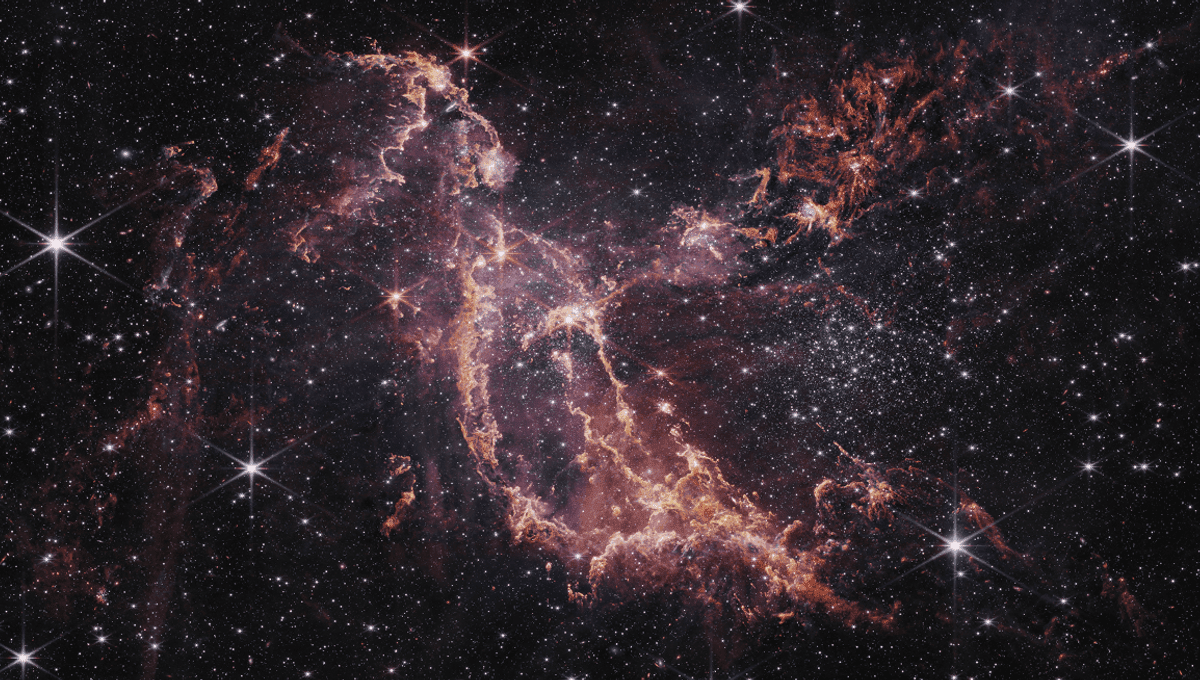
Astronomers using the JWST have discovered hundreds of stars surrounded by dust, the raw material from which rocky planets are born. The observations come from a star-forming region in the Small Magellanic Cloud, one of the small companion galaxies of the Milky Way. This galaxy is located just 200,000 light-years from our own.
The star-forming region in question is called NGC346. It’s the most massive young star cluster in its galaxy. The observations have revealed 500 young stellar objects with a mass smaller than the Sun and a whopping 45,000 stars that have not yet started nuclear fusion in their core, which means they are pre-main sequence. The incredible space telescope has detected the warm dust around these objects, shrouding them.
“We found lots of these very young embedded objects in the early stages of formation have enough material to form a protoplanetary disk and potentially planets… rocky planets,” Dr Olivia Jones, from the Royal Observatory of Edinburgh, told IFLScience.
“I was quite surprised how much dust was still around these objects because these are very harsh radiation fields. There are these massive stars, there’s lots of feedback, previous supernovae, and all sorts of effects going on which makes it quite a hostile environment. You and I definitely don’t want to be anywhere near this environment while these stars are forming at such a high rate.”
The observations are incredible in their own right, as this level of detail has never been observed before. Clearly, despite the harshness of this stellar nursery, it’s not hampering the potential emergence of planets. But there is another important aspect of this study. The region is metal-poor; that is astronomers’ lingo for having fewer heavy elements (anything that is not hydrogen and helium) compared to the Sun. Actually, the region has about one-fifth of the metallicity of the Sun.
This is similar to what star-forming regions in larger galaxies were like during the period of Cosmic Noon, where star formation rate in the universe peaked. That was around 11 to 12 billion years ago, This new study suggests that if the stars here could hold on to enough material to form planets, then there might be a large number of worlds out there that are over twice as old as the Solar System.
The team also employed observations from Hubble and ALMA (the Atacama Large Millimeter/submillimeter Array) to further understand the region and see how it evolved as different wavelengths track different periods of star formation.
The team wants to explore it further with spectroscopic analysis to reveal the composition of the dust and the presence of ice, as well going to look for those young stellar objects that are completely cocooned in dust – such as the stars that are forming right now.
“Not even forming, about to form,” Dr Jones said. “That’s what we’re really looking for, to see the changes in these conditions and then compare it over time. With the Hubble data and then ALMA data, we’ve got a very rich, beautiful, high-resolution data set from the ultraviolet to the submillimeter.”
The study is published in the journal Nature Astronomy.
Source Link: JWST Spies Planetary Ingredients In Galaxy Next Door